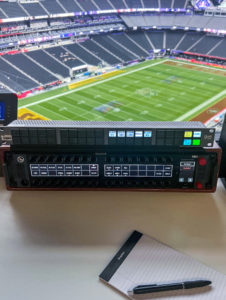
Ivan Dulguerian,
Business Development Director, Broadpeak
Video streaming is growing at a rapid pace, gaining more and more viewers from legacy broadcast. To keep up with their growing investment in content, video service providers need to find effective methods to boost content monetization, and targeted advertising is one way to do that. Enabled by ABR streaming, targeted advertising allows service providers to seamlessly deliver video ads into streamed content to create additional revenues.
Targeted advertising makes ads more relevant for viewers, which helps increase viewer engagement and raises the value of ads placed by the video service providers. What’s more, targeted ads enable advertisers to reach audiences more effectively and improve their return on investment.
This article discusses the evolution of video advertising, the relationship between targeted advertising and ABR streaming, and the different methods for delivering targeted ads. To conclude, the article highlights how video service providers can manage scalability issues that go hand-in-hand with large audiences.
The Evolution of Video Advertising and Different Targeted Ad Delivery Methods
Video advertising has changed significantly over the past few years: starting with a growing number of devices used to consume content and display ads, the rise of adaptive bit rate (ABR) formats, and an increase in VOD and nonlinear TV consumption. As advertising shifts toward streaming and away from broadcast, video service providers are rethinking their content distribution and ad insertion strategies. Increasingly, they are embracing streaming and targeted advertising.
Targeted advertising and ABR streaming technology are complementary to one another. While broadcast distribution sends one video or ad to all viewers, video streaming delivers a specific stream to each individual viewer using unicast technology (i.e., 1,000 streams for 1,000 viewers). Targeted advertising follows a similar approach, delivering a personalized ad to each viewer or group of viewers based on their individual viewing habits, tastes, and more.
There are two main delivery methods for targeted advertising. Client-side ad insertion (CSAI) is the traditional technique, where ad insertion is managed on the player side. However, CSAI can cause rebuffering between the ad and the content, which can negatively impact the user experience. In addition, since the ad can be identified, it also runs the risk of being blocked by an ad blocker.
The newer and more popular approach to targeted ad delivery is server-side ad insertion (SSAI). With this approach, ad insertion is more efficient since the ad is directly stitched into the viewing session from the server side. With SSAI, buffering is unlikely and ad blocking becomes impossible. SSAI is skyrocketing in use because of the smoother overall viewing experience it provides. With SSAI, video service providers can use a single advertising system to address all playback devices. By adopting a SSAI solution that’s cloud-based, video service providers can deliver addressable TV at scale, which is especially critical for live events.

Functional blocks for a SSAI solution
Addressing Scalability Issues
Scalability remains a major challenge in the video streaming environment, not only for the video content but also for the targeted ads. Scalability issues can be caused by number of potential choke points in the video delivery chain. Often, these problems happen at the point of distribution when the demand exceeds the CDN or the network capacity.
So, how can video service providers resolve scalability issues? When scalability issues are related to distribution, multicast ABR technology offers an effective solution. Multicast ABR enables the delivery of one stream over the network to address millions of viewers compared with one stream per viewer in a traditional ABR delivery scenario. With this technology, video service providers can address all of the connected devices in the home and reach a massive audience without continuously increasing their CDN costs.
Multicast ABR requires a managed network, and this is where video service providers can work closely with internet service providers (ISPs) to deliver their content using multicast ABR infrastructure inside of the ISP networks. Global CDNs alone cannot deal with the challenge that larger audiences pose in streaming, and ISPs are an essential link in the distribution of video content. This approach allows video service providers to leverage the ISPs’ networks, decreasing the need for new infrastructure and moving delivery closer to end users, which improves QoE.
Collaboration between ISPs and video service providers benefits all parties. By collaborating with ISPs, video service providers can tackle scalability issues — ensuring outstanding quality for targeted ads and increasing monetization by selling ads at a higher price. Advertisers can reach the audience they want, and ISPs are empowered to monetize their network and infrastructure.
The French video market is an excellent example of collaboration between video service providers and ISPs. In France, all of the main TV channels have joined forces to implement a fully addressable TV solution on the ISP’s set-top boxes. Today, there are around 7 million set-top boxes that support targeted advertising in the country, and the number of targeted ad impressions delivered on linear channels via ISP set-top boxes is expected to grow to more than 600 million in 2022, according to AF2M.
Conclusion
As video streaming becomes more and more mainstream, targeted advertising represents an outstanding opportunity for video service providers to boost content monetization. According to eMarketer, spending on streaming services and smart TV advertising in the U.S. grew by 40.6% from 2019 to 2020, surpassing $9 billion. This figure is expected to more than double by 2025.
Yet, to successfully deliver targeted ads, video service providers need a solution that is simple to use, supports a range of devices, prevents the use of ad blockers, and ensures a smooth streaming experience for viewers. Targeted advertising and multicast ABR are two evolutions changing the media industry. When combined, they will enable SSAI to be used to address large audiences and become the de-facto advertising solution.
In the end, service providers must overcome scalability issues that are prevalent during peak viewing. Broadpeak is leading the charge for targeted advertising innovation with its cloud-based SSAI solution, multicast ABR technology, and expertise in helping foster partnerships between video service providers and ISPs — enabling true monetization for video streaming.









